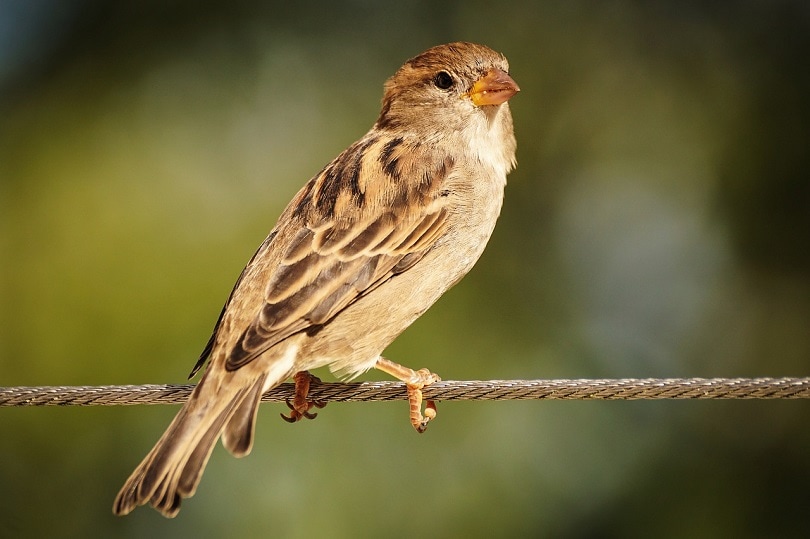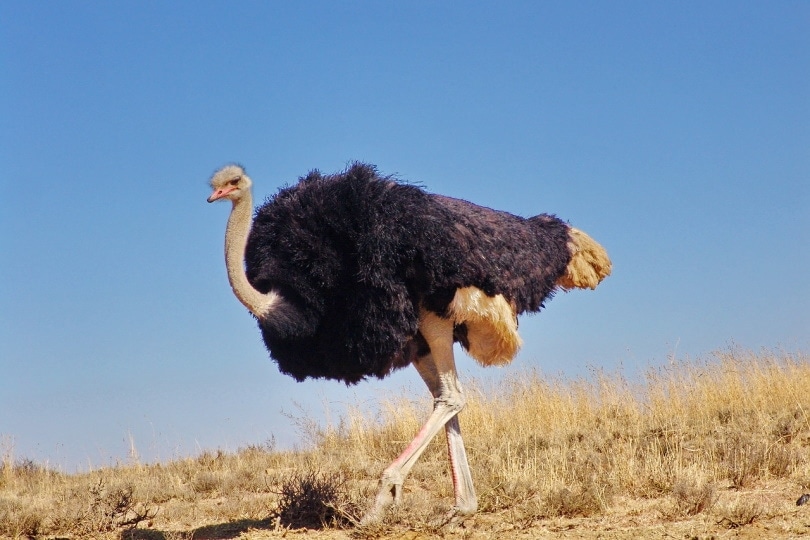Do Birds Have Hollow Bones? Do They All Have Them?
Last Updated on

Hollow bones are also called pneumatized bones because they are filled with air spaces. Birds contain some unique characteristics that help them fly. Having hollow bones is one of them. Air sacs are linked to the hollow parts of the bones, which assist in oxygen intake when flying. The birds’ lungs essentially run the length of the bones. This assists them when inhaling and exhaling and increases the oxygen amount in the blood. This process gives the birds more energy to fly.
The number of hollow bones differs from one species to another. Large gliding and flying birds usually have many hollow bones. However, contrary to popular opinions, hollow bones do not make birds lighter. In fact, compared to other similar-sized animals, bird bones are heavier. If you compare a two-ounce mouse’s skeleton with a two-ounce bird’s skeleton, you will find that the bird’s bones are heavier.
This article will talk more about hollow bones and their significance in a bird’s life.

Why Do Birds Have Hollow Bones?
1. To Help in Flight
Birds also have lightweight hollow bones with air sacs. The pneumatized bones filled with air spaces help with oxygen intake when birds are flying. Birds’ lungs extend all through their bones.
Moreover, these bones have thin and tiny cross pieces that make them stronger. This reduces the force of weight. Their skeleton is stiff to provide firm attachments of flight muscles and help with the force of thrust. Wings also provide the force of lift.
In addition to hollow bones that are very strong and light, the feathers are also very light, with a perfect shape of wings to catch the air, and lungs extending throughout the bones that efficiently get oxygen. All these help them fly long distances without exhaustion.

2. Respiration
Hollow bones are basically an adaptation to help birds’ lungs. Actually, birds need a lot of oxygen to fly. As already said, their bones have become pneumatized, meaning that they have air spaces like human sinuses.
Other studies have shown that when the density of bones increases, the strength and stiffness of the bones increases. The optimization strategies used in designing strong and stiff but lightweight artificial airframes are to maximize stiffness and strength relative to weight.
According to Matt Wedel of the University of California – Berkeley, as young birds grow to maturity, the air sacs used as lungs grow offshoots forming little hollows in their bones. The air sacs remain attached to the offshoots while they are still used as lungs. Birds have strange physiology that strengthens their bones and allows oxygen intake while exhaling and inhaling simultaneously.
Without the ability to take oxygen all the time, birds might not be able to perform the needed physical exertion to sustain long high altitude flight periods. They are prepared to fly as early as their first breath.

Development of Hollow Bones in Birds
The bones in birds may be hollow, but they are also built of notably denser material, which makes them strong but heavier per unit bone. This might be one of the reasons there is no pressure on other land vertebrates to evolve hollow bones. A simple explanation is that this may be why bird ancestors saw hollow bones as an advantage. This is why we assumed that the denser material developed before the hollowness.
The feature of making hollow bones likely developed in birds’ ancestors during the Triassic Period, approximately 230 million years ago. Apparently, in the earth’s history, the atmosphere contained way less oxygen than today.
Birds belong to a group of dinosaurs known as Sauriscia. This group evolved during this time, and to some extent, all of them had hollow bones (including the giant Sauropods). One theory is that the extra surface area allowed birds to acquire more oxygen from the exhausted air when the air sacs that filled the hollows became a part of the lung system. This became more helpful later when oxygen levels went up, and they could afford to use the added oxygen for intensive flying.

Birds without Hollow Bones
Ostrich

The shape of an ostrich facilitates its running. Unlike most birds, ostriches have two toes on each foot and a large nail on the inner toe looking like a hoof. Also, the ostrich’s leg bones are not hollow. Like human bones, they are solid. This makes it easier for their terrestrial travel and long-distance runs.
Other flightless birds such as emus exhibit pneumatic osseous. They have pneumatized femurs. In the case of emu, it has pneumatized cervical vertebrae.
Diving Birds

Diving birds have fewer hollow bones than non-diving species. Penguins, puffins, and loons do not have pneumatized bone completely.
Are Hollow Bones Fragile?
You may think that hollow bones are fragile like an empty shell. This is not true since birds cannot afford fragile bones. Internal struts support these hollow bones. Internal struts are structures that help strengthen the bone to make it withstand longitudinal pressure.
Struts found in a bird’s bones resemble those that support airplane’s hollow wings. They give bones extra strength to withstand the harshness of takeoffs, flights, landings, and other activities occurring in a bird’s life.

In Conclusion
A bird’s skeleton is vital to its daily life. It has to be light enough for a bird to fly but strong enough to take the toil of flying. This is the reason why birds have hollow bones. Some birds even have lighter bones than feathers. As seen in this article, hollow bones are also used for respiration. Birds without hollow bones such as penguins do not fly.
Featured Image Credit: suju-foto, Pixabay
About the Author Robert Sparks
Robert’s obsession with all things optical started early in life, when his optician father would bring home prototypes for Robert to play with. Nowadays, Robert is dedicated to helping others find the right optics for their needs. His hobbies include astronomy, astrophysics, and model building. Originally from Newark, NJ, he resides in Santa Fe, New Mexico, where the nighttime skies are filled with glittering stars.
Related Articles:
How to Clean a Refractor Telescope: Step-by-Step Guide
How to Clean a Telescope Eyepiece: Step-by-Step Guide
How to Clean a Rifle Scope: 8 Expert Tips
Monocular vs Telescope: Differences Explained (With Pictures)
What Is a Monocular Used For? 8 Common Functions
How to Clean a Telescope Mirror: 8 Expert Tips
Brightfield vs Phase Contrast Microscopy: The Differences Explained
SkyCamHD Drone Review: Pros, Cons, FAQ, & Verdict
